






By Shirley Bloomfield, CEO NTCA–The Rural Broadband Association
When we’re connected, America thrives, and for rural communities, the federal Universal Service Fund (USF) helps community-based providers deliver broadband built to last for generations. This fund is critical for ensuring highquality, affordable broadband services are available for families, schools, libraries, health care facilities and so much more.
The idea behind the USF is that all Americans should have reliable access to communications services at a reasonable cost—it’s been a national objective for over a century and was codified into law in the 1996 Telecommunications Act. Today, the USF enables providers to make a business case to invest in many rural areas, sustain networks once they are built and keep service rates affordable.
Unfortunately, the USF is at risk of disruption. Last summer, a federal circuit court declared that the way the USF is funded is unconstitutional, and the case is now before the Supreme Court for review.
According to an August 2024 survey of more than 200 NTCA members across 35 states, the loss of USF support could be catastrophic for rural consumers. Respondents reported that rural consumers could see their monthly bills increase by $72. And 68% of respondents said they may need to cancel over $1 billion in deployment projects.
These survey results highlight the importance of the USF in both getting and keeping rural consumers connected to high-quality, affordable services. You can learn more at ntca.org/universalservice.
The online world moves fast, and it’s a rich, helpful place. In fact, there are so many opportunities and so many resources that keeping up with the latest can prove daunting. Here are a few hot topics:
These bite-sized videos usually last a few seconds. They’re often lighter in tone. Many are great for showing fun or helpful ideas quickly, such as cooking tips, telling a joke or sharing engaging facts. Others are simply silly fun. Most social media services offer some version of these videos.
AI is appearing in more and more places. It may help complete a text message, edit and sort photos on a smartphone or even create an image from scratch. And that’s only the beginning. Think of AI as a smart, learning system capable of processing tremendous amounts of information—and it’s changing and growing daily.
This digital currency is stored and managed on secure systems. Bitcoin is a famous example, but there are many others. Some people use cryptocurrency to buy goods or services, and others consider it an investment. It’s another growing, diversifying part of the digital world.
With the right hardware, such as VR goggles, virtual reality can be like stepping into a video game or movie. It’s also a rapidly growing technology, expected to become more affordable and accessible over time.
The arrival of streaming entertainment services brought the promise of simple, affordable access to deep, rich libraries of content. So, how are these increasingly popular
With so many possibilities, first consider what you generally want to watch. Do you love original dramas? Perhaps classic sitcoms and movies are your favorites? Are live sports or kids’ programming your go-to shows? Or maybe it’s a mix of all of the above. Here are a few options:
For exclusive originals: Netflix, Hulu and Max—formerly HBO Max—are standouts. They mix fresh shows and movies with a wealth of older favorites. And Hulu gives access to TV episodes the day after they air on traditional TV.
For family and classics: Disney+ shines. And Peacock and Paramount+ serve up plenty of longtime favorites, as well as new shows.
services, ranging from Netflix to YouTube TV, doing? Seemingly endless content? Check. Simple and affordable? Well, that gets a little complicated.
With care, though, you can find the
When it comes to pricing, streaming services increasingly offer a range of options—along with some tradeoffs. Many services have lower-cost plans, but they come with ads. If you don’t want interruptions, be prepared to pay extra. Similarly, Netflix offers a more expensive choice for high-definition content. Meanwhile Disney+ emphasizes the ability to bundle added services like Hulu.
Netflix: A lower-priced ad tier was introduced in 2023 to go along with the more expensive ad-free option.
Disney+ and Hulu: The price difference between ad-supported and ad-free versions is significant, so be aware when considering such services.
Amazon: Members of Amazon Prime must now pay an extra fee to remove ads from streaming content.
So, the price considerations of comparing streaming services to traditional cable television is more complex. But the system offers consumers greater choice—after all, many people don’t mind ads. Pricing and offers can change quickly, so check each service for the current rates and offers.
services that not only meet your needs but also your budget. Live sports, ad-free options, high-definition streams and so much more are a few clicks away.

Traditional TV networks are still the biggest player in the live sports world, but services like YouTube TV and Sling allow you to tap into many of those channels. However, the streamers are catching up.
Services like ESPN+, Peacock and Paramount+ have exclusive sports content. Amazon Prime hosts NFL games on Thursday nights. Even Netflix recently showcased a live night of boxing.
Then, there are also the direct-toconsumer options, like the NFL’s Sunday Ticket or MLS Season Pass on Apple TV. Fans can binge-watch their favorite leagues.
Even though it doesn’t always feel like it, spring is replacing winter, as sad as I am to see it go. It’s time to get outside for fun and maybe a little bit of work, too. This is the time of year when many of us plan to spruce up the yard, plant a garden or tackle overdue home chores.

CHARLIE BORING CEO
Whatever task you need to get done or hobby you enjoy, there are likely internet-based resources that can help. At BTC Fiber, we see firsthand examples of how access to high-speed broadband empowers you to learn, plan and confidently execute projects.
Consider gardeners, for example. It doesn’t matter if someone is a beginner or a seasoned green thumb, they can use the internet to research plant varieties suited to their climate, find layout ideas for vegetable gardens and even order seeds and supplies online. YouTube tutorials provide step-by-step guides for building trellises, creating compost bins and improving soil quality. Websites like the Farmers’ Almanac and our fantastic state extension offices are also great resources that can provide planting calendars and pest management tips.
Even better, online communities let gardeners share advice and troubleshoot problems in real time. From identifying mysterious weeds to diagnosing yellowing leaves, having access to expert advice—or a crowd of helpful fellow gardeners—can make all the difference.
Or perhaps you struggle with keeping a lush, green lawn. Those never happen by accident. Fortunately, you don’t need to be a landscaping expert to achieve one. Go online to find lawn care schedules tailored to your region and learn about the right fertilizers, grass seed mixes and weed treatments. Online video tutorials show how to aerate your soil, reseed patchy areas and properly mow for healthy growth.
Tech-savvy homeowners can even use smart irrigation systems connected to Wi-Fi to control watering systems from a smartphone. These tools improve water usage and keep your lawn looking great, even during hot, dry spells.
There are plenty of other ways modern digital tools can make life a little easier. From fixing leaky faucets to repairing drywall, the internet has become a go-to resource for home repair solutions. With access to instructional videos, product reviews and downloadable manuals, you can tackle many common repairs.
While the internet can help you dream big about your spring projects, it’s important to make safety a priority—especially if your plans involve digging. Before you break ground for a new garden bed, fence or deck, call 811 to have underground utilities marked. It’s free. It’s easy. And it could save you from costly repairs—or worse, a dangerous accident.
Broadband internet has made it easier than ever to plan and execute DIY projects, but some tasks still require a little extra preparation. As you gear up for a productive spring, let the web be your guide—but don’t forget to make that crucial call before you dig.
Here at BTC Fiber, we’re proud to keep our community connected and equipped for success, whether you’re planting tomatoes or building a new patio. Happy spring—and safe digging!
Connection is a bimonthly magazine published by BTC Fiber, ©2025. It is distributed without charge to all customers of the company.

is a member-owned cooperative dedicated to delivering advanced telecommunications technology to the people of Bledsoe and Sequatchie counties and portions of Van Buren, Rhea, Cumberland and Hamilton counties.
BTC Fiber P.O. Box 609
Pikeville, TN 37367
423-447-2121
423-949-2121
Email: customer service@bledsoe.net
BOARD OF DIRECTORS
John Lee Downey, President
James Condra, Vice President
Sandy Burnett, Secretary/Treasurer
Lamar Johnson
Marvin Price
Brian Reece
Richard Smith
Produced for BTC Fiber by:
On the Cover: The staff members at Bledsoe County Nursing Home try to be a second family for residents, providing a fun, loving facility
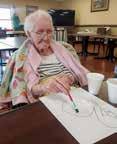
See story Page 8.

BTC Fiber offices will be closed April 18 in observance of Good Friday.
BTC Fiber wishes all of our members and their families a happy and joyous Easter.

It’s time to spring forward! Daylight saving time begins at 2 a.m. on Sunday, March 9. Don’t forget to set your clocks ahead one hour.
It’s also a great time to check the batteries in your smoke and carbon monoxide detectors.

When snow fell on the BTC service area in January, our crews got to work and our members got out and had fun. We asked you to submit your favorite photos from the snow days, and you delivered.




Story by KATHY DENES
It’s a rite of passage—a child in the roller coaster line steps up to the mark, stands up straight and finally hits that magical measurement, tall enough to be welcomed aboard for a lifetime of adventure.
The thrill of roller coasters never grows old, whether they’re modern rockets of cold, sleek steel or creaky, wooden rides that are a nostalgic nod to yesteryear. Around 1,000 coasters in the United States and thousands worldwide offer limitless options for destination vacations.
“At this point, I’ve been on just under 1,200 unique coasters at over 300 different amusement parks,” says James Nocito, a CoasterNerds contributing writer whose hobby of “chasing down rides” has taken him to 38 countries on four continents.
“Sometimes, I do actually think the hobby is ridiculous, but it’s also given me a chance to visit all sorts of places I probably wouldn’t have otherwise, like all 50 U.S. states. I guess I’ve always compared it to people who try to see a baseball game at every Major League Baseball stadium or such.”
• For a selection of the country’s top 100 coasters, consult coasterbuzz.com/rollercoasters/top100.
• If taking younger travelers along, be sure to check height requirements for the coasters you hope to experience.
• To check real-time waits before you go, visit queue-times.com.
• Concerned about motion sickness? Snack on something fairly bland 30 minutes to an hour before jumping in line.
Roller coaster fans seeking out the fastest ride, wildest twists and turns or just a new experience have created a community. Numerous websites, like coaster101.com, and social media pages, like Facebook’s CoasterNerds, are dedicated to informing and connecting enthusiasts.
“There’s this whole community within the parks and coasters fandom, and some of the best people I met from internet chatrooms or online message boards when I was a teenager are people I know 20-plus years later, now hanging out in person,” James says.
He hesitates to cite one roller coaster as his favorite, “but if I were going to suggest to someone some of the biggest, baddest or craziest rides in the U.S., I’d probably start with Fury 325.” That ride at Carowinds in Charlotte, North Carolina, is North America’s tallest, fastest and longest giga coaster—one with a height or drop of at least 300 feet.


Consider visiting these thrill rides:
The Beast broke all records when it opened at Kings Island in Mason, Ohio, in 1979, and it still reigns as Guinness World Records’ longest wooden roller coaster.
The Voyage at Holiday World in Santa Claus, Indiana, is the world’s second-longest wooden coaster, running for 1.2 miles and featuring a world-record five underground tunnels.
It’s always coaster weather at the Mall of America in Bloomington, Minnesota, where the 7-acre center court offers five unique options.
Two record-breaking coasters—the nation’s first tilt coaster, the Circuit Breaker, and Palindrome, a one-of-a-kind infinity coaster—are set to open in Texas this year at Austin’s COTALand.
Also opening this year at Cedar Point in Sandusky, Ohio, is the Siren’s Curse, expected to break records for height, speed and longest tilt.
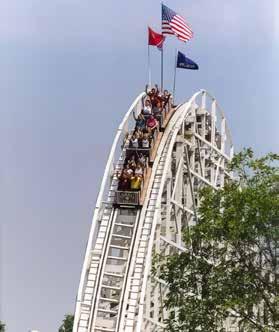


Look for CoasterNerds on Facebook and visit these websites for more information: coasterforce.com, aceonline.org, coaster101.com and coasterbuzz.com.







Story by MELANIE JONES

Daniel Brown wants new residents of the Bledsoe County Nursing Home to feel like they’re gaining family, not being separated from theirs.



Daniel is in his third year as administrator at the county-owned nursing home, and he’s been there in some capacity for six years. In that time, he has witnessed a lot of love—from the staff for the residents, from the families and among the residents.
One of the loveliest stories occurred during the pandemic. He said there was a lady in the nursing home whose husband still lived at home but would visit her daily. They had been married 74 years and never spent a day apart until she moved into the facility. Then COVID-19 hit, and he wasn’t allowed in-person visits. Eventually, he reached the point where he could no longer live at home. His 10-day quarantine upon entering the nursing home ended on the couple’s 75th anniversary. They had a big party and invited the family to take part while keeping their distance. They had cake as well as a bride’s and groom’s table, and most








importantly, they got to see each other again. “I don’t know if there was a dry eye in the building,” Daniel says.
And those types of moments aren’t unusual. “Things like that make us different from giant, corporate nursing homes,” Daniel says.
Another thing that makes Bledsoe County Nursing Home stand apart is that








Creating a safe, pleasant home is the goal of the Bledsoe County Nursing Home. Residents can bring personal decorating touches like a chair or drapes. Various programs keep them engaged in the community and with each other. The staff’s joy is seeing the happy smiles.
everyone seems to know each other. Staff members often know the residents from before they come to live there. A resident may have taught a nursing assistant in elementary school or could have been a social worker’s bank teller. Many of them were neighbors.
“At a corporate nursing home, the doctors may not know the residents before they read their charts,” Daniel says. At Bledsoe County Nursing Home, Erlanger




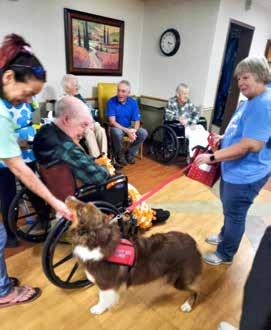
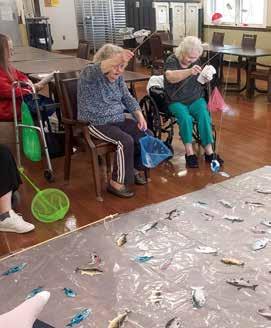
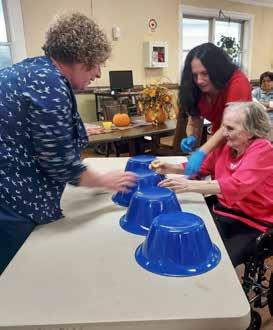
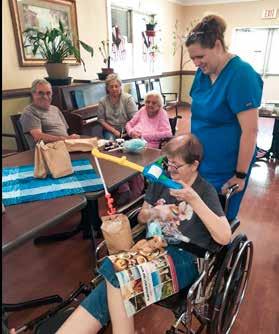
Bledsoe Hospital is right next door. Doctors there often treated the residents before they moved into the nursing home, and they continue to treat them while they are there.
“Here you aren’t just a number,” Daniel says. “We work to make you feel like you’re part of a big family.”
And that means making the nursing home feel like home, so residents can bring in a small piece of furniture, like a chair, hang their own drapes in their rooms and add personal touches to make it feel like they’re just moving into an apartment. Making it feel like home is about more than appearances. Daniel says many people report that they dreaded going to the nursing home because it smelled like a
Through a wide variety of activities and daily interactions, the nursing home’s staff and residents form close-knit relationships that help foster a sense of community.
nursing home. It didn’t mean it was dirty, there’s just a certain institutional smell.
He set about to change that. Before he came along, the food, housekeeping and laundry services were all brought in from Chattanooga. Those services were moved in-house. The linens no longer have a chemical smell, and “if something needs to be cleaned seven times it’s cleaned seven times,” Daniel says.
“Now people tell me it doesn’t smell like a nursing home, and it doesn’t feel like a nursing home. It just feels like a place where people are having a good time,” he says.
The residents are still very much a part of the community. Volunteers at a local Methodist church bake several cakes every month for residents’ birthdays. Singers from another church are there every month to lead in worship. And every Tuesday, T.A. Smith from Bethel Church of Christ comes in to present a message and pray with residents.
Groups bring in presents during the holidays, and people bring decorations after weddings and other special gatherings. They’ll divide flowers into small bouquets for residents’ rooms, and they always come up with something fun to
do with balloon arches. “It seems like we have a balloon arch in the building every week,” Daniel says with a laugh, explaining that balloon arches just weren’t a thing when the residents were growing up. Now, the nursing home uses them for football-themed parties, Valentine’s Day parties and more.
“We love our residents, and we love to see them smile,” he says.
For holidays, residents can go to their loved ones’ homes, their families can come to the nursing home, or if they don’t have families that visit, the nursing home staff makes the holiday special. They prepare Thanksgiving and Christmas dinners, dress up and make the season bright. For Fourth of July and Memorial Day, Daniel will grill steaks, and they fix baked potatoes. “We can make it feel like you’re not at a nursing home,” Daniel says.
Despite all the effort to make Bledsoe County Nursing Home a happy place, Daniel says he understands it’s hard to leave family there. “But the worry on a family diminishes over time,” he says. They counsel the families about their decisions. “We try to take the worry away.
“It is totally normal to feel like you let down your family,” Daniel says, “but at a certain point, it’s the right decision. It’s the safest decision.”
Story by DREW WOOLLEY and JEN CALHOUN
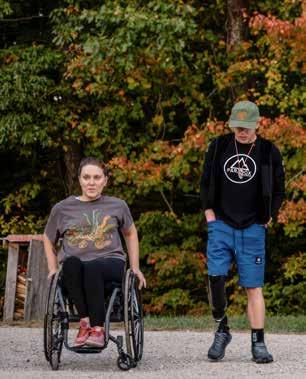
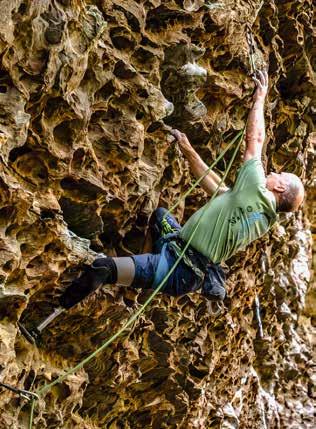
After Shane Farver’s lower-level spinal cord injury, the rockclimbing enthusiast realized he needed to learn new ways of moving through the world, whether scrambling up rocks or making his way through shopping malls and office buildings.
“Early on in my recovery, a friend of mine said, ‘A cool thing about climbing is the problem-solving aspect of it. You have to figure out how to get from this hold to that hold as efficiently as possible using your body as it is and kind of figuring those things out,’” Shane says.
It’s the same for people with disabilities, he says. “We have to be problem-solvers, because—very often—the world is not made for us.”
Today, Shane is communications director and a member of the organizing committee for the Adaptive Climbers Festival. The three-day event offers people with disabilities a chance to learn rock climbing and other outdoor skills while camping and communing in Eastern Kentucky’s Red River Gorge.
“We really emphasize the notion that we do not take people with disabilities rock climbing,” Shane says. “We teach people with disabilities how to rock climb. The nuance there is we’re not here to take you on a ride. We’re here to empower you and help you see what’s possible in rock climbing and hopefully provide some confidence elsewhere in your life.”
The idea for the Adaptive Climbers Festival came about during a hot tub hang with a few adaptive climbers and their allies. “They were talking about the fact that outside of the competitive environment, there aren’t a lot of opportunities for people with disabilities to rock climb,” Shane says.
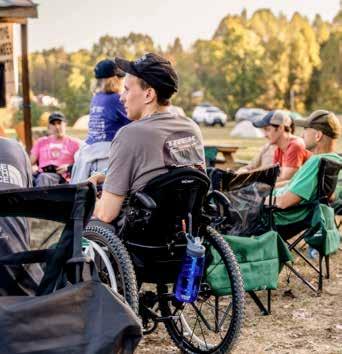
The first Adaptive Climbers Festival was in 2018 at a climbing area in northwest Alabama, but by 2022 the event found its home at Lago Linda Hideaway, a 410-acre wonderland that offers cabins, RV sites and campgrounds surrounding a 5-acre lake.
“We have our run of the place,” Shane says. “Once we figured out that setup, we didn’t want to hold it anywhere else. We also have other partners who help us out, including the local search and rescue folks. It’s a huge coordinated effort.”
The event offers about 30 clinics, including courses on rappelling and anchor-building, which shows attendees how to set up their ropes for climbing. Most of the courses are led by people with disabilities.
“That’s kind of our ethos—the idea that we’re here to empower people and to give people opportunities to grow and lead,” Shane says.
The Adaptive Climbers Festival has grown from about 30 participants to about 150 in 2024, including attendees from across the country, as well as some from Australia, New Zealand, Canada and Spain.

The first time Beth King saw a recumbent tricycle, she thought it was a joke. She rarely left the house for anything other than doctors’ appointments after retiring from the military in 2014 due to injuries she sustained three years earlier when a rocket-propelled grenade brought down her Chinook helicopter in Afghanistan.
Then, after battling a traumatic brain injury, rehabbing for permanent damage to her spine and back and undergoing a bilateral joint replacement for severe pain in her jaw, Beth’s occupational therapist wanted her to hop on what to her looked like a child’s toy.
“When she showed me a picture, it looked like a Big Wheel from when I was a kid,” says Beth, who was not happy about the idea. “But halfway through my first ride, I realized I’m out here by myself, no one’s running after me to catch me. And I really found that

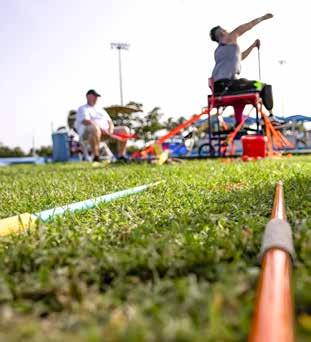
ABOVE: Training to succeed in new sports, like javelin, cycling, powerlifting and rowing, gives Beth King the confidence to overcome life's other challenges.
OPPOSITE PAGE: Participants in the Adaptive Climbers Festival come from all over the world to enjoy a weekend of rock climbing, fellowship and fun in Eastern Kentucky's Red River Gorge area.
liberating. I felt a sense of independence I hadn’t felt in years.”
She then took part in the Wounded Warrior Project’s Soldier Ride, introducing her to the world of adaptive sports. Now based in Missouri, Beth has trained in javelin, rowing, discus and powerlifting, even competing at the 2022 Invictus Games in the Netherlands. She hopes to qualify for the Paralympics in 2028.
“It’s what saved me. I was really struggling with depression, suicidal thoughts and isolation. I just couldn’t deal with anything. And it gave me something to train for, to get out of bed for,” Beth says. “Sports made me realize that I could still do all the things that I thought I lost.”
Realizing she was losing almost all function in her feet, in 2023 Beth decided to have her right foot amputated, allowing her to begin learning to walk with an artificial one. Last year, she completed her first year of welding school, a goal she set after retiring from the military.
“I think sports really gave me the confidence to advocate for myself. To believe that I didn’t really lose as much as I thought I had,” she says. “If you had asked me a year ago if I’d be welding right now, I would have said, ‘No way.’ I couldn't see a life bigger than the box I had put myself in with my injuries.”
Once she finishes school, Beth hopes to be able to make adaptive equipment for more people. “I don’t think people always understand that it’s not just sports equipment. It’s freedom,” she says. “It’s a regular life and feeling like you’re a part of things. To have a place where people can go and just have fun and play a sport, even if it might look different. I think people are starting to realize that it really does matter.”
Story by MELANIE JONES
Vanessa Angel became a travel advisor for one simple reason— she wanted to go to Disney World more often.
She still makes it there quite frequently. In fact, she loves the theme park and resort so much, she spent her 50th birthday there.
The full-time kindergarten teacher and now part-time travel advisor had just come home from school when her daughter brought up the idea. “She was like, ‘You know, I’d give about anything to be on Guardians of the Galaxy today,’” Vanessa says, referring to the roller coaster based on the popular Marvel characters. She heartily agreed with her daughter, and her husband told them to book a trip and the family would go. “I’m like, ‘That’s not funny. Don’t, don’t, we’re not playing,’” she says. But her husband was serious, and off they went for a spontaneous Disney birthday celebration.
The family fell in love with Disney during a trip there in 2007. Vanessa eventually wanted a way to learn more about the theme park and earn more trips there. That’s how she started her side gig as a Disney travel advisor in 2020.
While the internet has made it easier for people to book their own travel, a travel advisor can be more convenient. Vanessa says to think of it as a concierge service. Instead of spending all that time online or possibly hours on the phone on hold, her clients can just tell her where they want to go, when and for how long. Then BTC Fiber’s fast and dependable internet service helps Vanessa take care of all the details.

She recommends vacationers purchase travel insurance for those times when things go wrong. So, for example, a family whose planned Florida theme park adventure was ruined by a hurricane might not get to go on that week, but they can still take their dream vacation later if their trip was insured. “There’s a lot of things that you’ve got to do to get your money back or rebook so that you can still have the vacation you paid for,” Vanessa says.
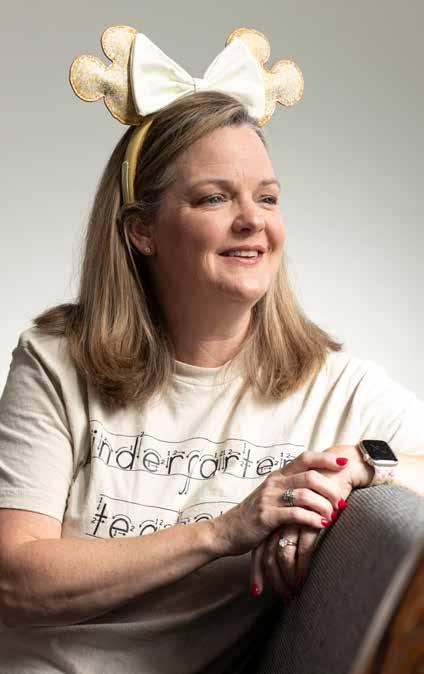










Vanessa has traveled extensively within the U.S. and by cruise ship. She’s also been to Disneyland in California. While she loved the California park, her favorite destination remains Florida’s Disney World.

“This is strange, but it’s like a bubble for me,” she says. “There’s a peace that’s there that we as a family don’t have anywhere else, and I know that’s odd. But it’s like the whole outside world is shut off because you’re just kind of in that Disney bubble, and that’s what I enjoy.”








Because of staffing changes and team members moving between departments, there are always fresh faces and new names contributing to BTC Fiber’s success. So, we are taking this opportunity to introduce you to the people who make our cutting-edge services possible, starting in this issue with the accounting department.
Chief Financial Officer Carrie Humble, a 26-year member of the BTC Fiber team, says every financial transaction that occurs within the whole company flows back to accounting. “It is our responsibility to ensure it is accounted for correctly in our financials,” she says.
Carrie and her husband, Jeff, have two daughters, Isabell and Kate. Isabell and her husband, Scott, are expecting their first baby in March. Kate is a
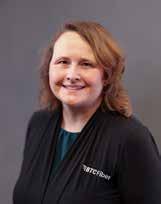
junior at Bledsoe County High School, where she plays golf and basketball. Carrie attends First Southern Baptist Church. “In my free time I like to travel and go hiking,” she says.
Accountant Cory Smith has worked at BTC for 10 years. His primary job functions include processing payroll and managing employee benefits like health insurance and retirement accounts.
“When I am not at work––and when I am at work––I am a huge nerd,” Cory says. “I enjoy video games, Dungeons and Dragons and watching anime. I have an amazing wife, Ally, and we have four cats and a corgi.”
Marlee Daniel is an accountant who runs BTC Fiber’s accounts payable team. She and her husband, Caleb, have two little girls, Emerie and Hazel.


“I enjoy spending time on our farm, which includes cattle and horses,” Marlee says. “I also enjoy being around our three cats and three dogs.”
Alison Prater is a BTC accountant who works mostly with cash accounts, but she also manages some inventory tasks. She and her husband, Joey, have two children and three grandchildren.
“When I am not at work, you can find me at home spending time with my family, playing video games or doing diamond art,” Alison says.
Tonya Herron joined the BTC Fiber family as an accountant seven years ago. She and her husband, Ken, have four sons and two grandsons.
“In my spare time, I enjoy spending time with my family, reading and sewing,” Tonya says.
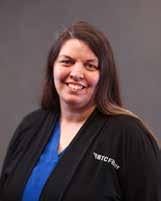









Every financial transaction that occurs within the whole company flows back to accounting.”
Chief



Italian cuisine, with its fresh ingredients and age-old techniques, has woven itself into the fabric of American culture.
Pizza, spaghetti and Alfredo are all favorites, but lasagna may top the list. It’s simply hard to resist. Keep the Italian theme going with an Italian chopped salad and a cannoli poke cake. Loosen your belt and get ready to embark on your Italian culinary experience without leaving home.

Food Editor Anne P. Braly is a native of Chattanooga, Tennessee.
Photography by Mark Gilliland
1 pound sweet Italian sausage
3/4 pound lean ground beef
1/2 cup minced onion
2 cloves garlic, crushed
1 (28-ounce) can crushed tomatoes
2 (6.5-ounce) cans tomato sauce
2 (6-ounce) cans tomato paste
1/2 cup water
2 tablespoons white sugar
4 tablespoons chopped fresh parsley, divided
1 1/2 teaspoons dried basil leaves
1 1/2 teaspoons salt, divided, or to taste
1 teaspoon Italian seasoning
1/2 teaspoon fennel seeds
1/4 teaspoon ground black pepper
12 lasagna noodles
16 ounces ricotta cheese
1 egg
3/4 pound mozzarella cheese, sliced
3/4 cup grated Parmesan cheese
Heat the oven to 375 F.
Cook sausage, ground beef, onion and garlic in a Dutch oven over medium heat until well browned.
Stir in crushed tomatoes, tomato sauce, tomato paste and water. Season with sugar, 2 tablespoons parsley, basil,
1 teaspoon salt, Italian seasoning, fennel seeds and pepper. Simmer, covered, for about 1 1/2 hours, stirring occasionally. Bring a large pot of lightly salted water to a boil. Cook lasagna noodles in boiling water for 8 to 10 minutes. Drain noodles, and rinse with cold water.
In a mixing bowl, combine ricotta cheese with egg, remaining 2 tablespoons parsley and 1/2 teaspoon salt.
To assemble, spread 1 1/2 cups of meat sauce in the bottom of a 9-by-13inch baking dish. Arrange 3 to 4 noodles lengthwise over meat sauce to cover. Spread with 1/2 of the ricotta cheese mixture. Top with 1/3 of the mozzarella cheese slices. Spoon 1 1/2 cups meat sauce over mozzarella, and sprinkle with 1/4 cup Parmesan cheese. Repeat layers, and top with remaining mozzarella and Parmesan cheese. Cover with foil. To prevent sticking, either spray foil with cooking spray or make sure the foil does not touch the cheese. Bake for 25 minutes. Remove the foil and bake for an additional 25 minutes. Remove lasagna from oven, and let it rest for 15 minutes before slicing and serving.

1 (15.25 ounce) yellow cake mix, plus ingredients on box to make the cake as directed
Topping:
1 1/2 cups ricotta cheese, well drained
2 cups mascarpone cheese
1/2 cup powdered sugar
1 (3.4-ounce box) instant vanilla pudding mix
1 teaspoon vanilla extract
1 teaspoon fresh orange zest
1/2 teaspoon cinnamon
1/8 teaspoon salt
1 1/2 cups milk
10 ounces mini chocolate chips
Make sure ricotta cheese is well drained— overnight is best, if possible, because it needs to be thick.
Prepare and bake cake according to directions on the package for a 9-by-13inch baking dish. Remove cake from oven
Make the dressing in advance to allow flavors to marry.
Lemon Vinaigrette:
1/2 cup extra-virgin olive oil
3 tablespoons fresh lemon juice
2 tablespoons red wine vinegar
1 shallot, finely chopped
2 garlic cloves, finely chopped
2 tablespoons dried oregano
1 teaspoon kosher salt
Freshly ground black pepper
Salad:
1 head iceberg lettuce
1 head radicchio
1 small red onion, thinly sliced

and poke holes all over it using the handle of a wooden spoon, large wood skewer or a straw. Set cake aside to cool.
In a large bowl, beat the ricotta and mascarpone cheese with an electric mixer on medium speed until well combined. Beat in the powdered sugar and dry pudding mix. Then beat in the vanilla, orange zest, cinnamon and salt. Once well combined, slowly beat in the milk a little at a time.
Spread about 1/3 of the topping over the cake, making sure it gets into holes. Then continue spreading the remaining topping, and sprinkle on the mini chocolate chips. Cover the cake and refrigerate for a few hours or overnight. Cut and serve well chilled.
Note: This cake is especially good with a little chocolate syrup drizzled over the top.
1 pint cherry tomatoes, halved or quartered
1 can chickpeas, rinsed and drained
4 ounces fresh pearl mozzarella, drained
4 ounces provolone cheese, diced
5 pepperoncini peppers, stemmed and sliced Kosher salt and pepper, as needed
1 teaspoon fresh oregano, for garnish
Make the dressing. In a small bowl, whisk together the olive oil, lemon juice, vinegar, shallot, garlic, oregano, salt and pepper. Set aside.
Cut the iceberg lettuce in half, then cut out the core. Slice the lettuce lengthwise into 1/4-inch strips. Repeat with the radicchio.
In a large bowl, combine the lettuce, radicchio, onion, tomatoes, chickpeas, mozzarella, provolone and pepperoncini. Drizzle with the dressing and toss gently to coat. You may not need all of the dressing, so serve any leftover vinaigrette on the side. Season salad with salt and pepper and toss again. Garnish with oregano, if desired, and serve.
